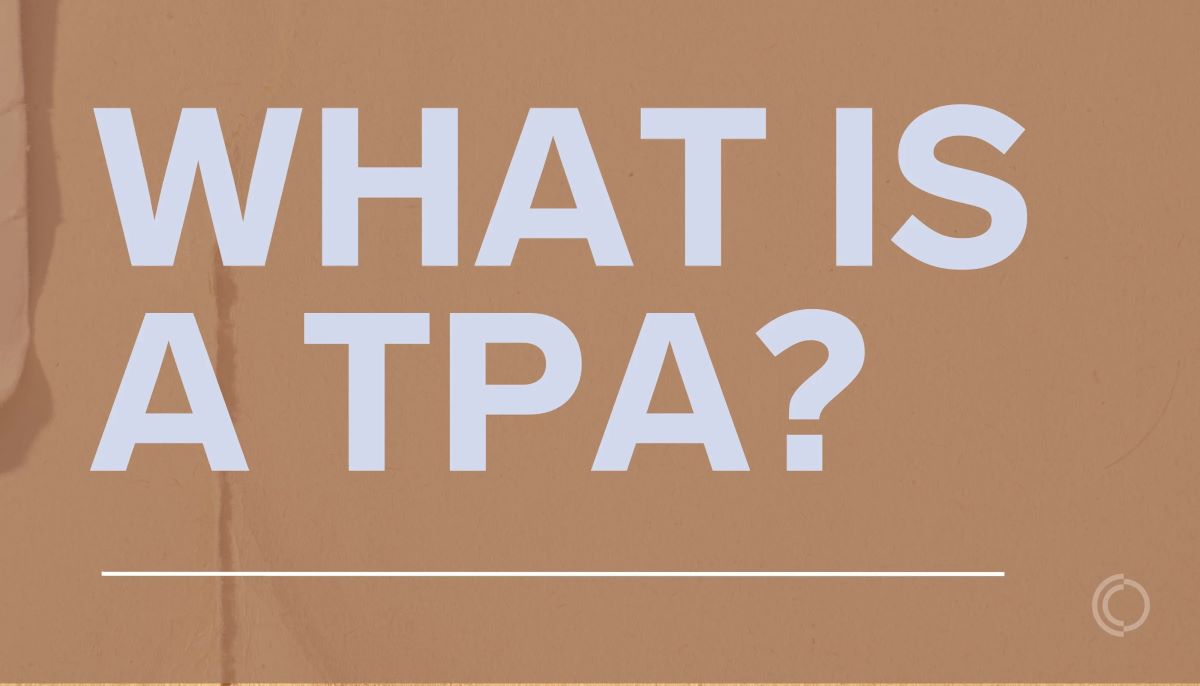

Finance
What Is Adverse Selection In Health Insurance?
Modified: December 30, 2023
Learn about adverse selection in health insurance and its impact on finance. Understand how this risk phenomenon affects premiums and coverage options.
(Many of the links in this article redirect to a specific reviewed product. Your purchase of these products through affiliate links helps to generate commission for LiveWell, at no extra cost. Learn more)
Table of Contents
Introduction
Health insurance plays a crucial role in providing financial protection and access to healthcare services for individuals and families. It ensures that people can receive the necessary medical attention without the burden of high expenses. However, the concept of adverse selection poses a significant challenge to the health insurance industry.
Adverse selection, in the context of health insurance, refers to the tendency for individuals with a higher risk of medical expenses to seek and retain insurance coverage more than those with a lower risk. This selective behavior can lead to imbalances in the risk pool, causing financial strain on insurance companies and potentially driving up premiums for everyone.
Understanding and addressing adverse selection is vital for insurance providers, policymakers, and consumers alike. By exploring the causes, consequences, and strategies to combat adverse selection in health insurance, we can find ways to create a balanced and sustainable system that benefits everyone.
In this article, we will delve deeper into the concept of adverse selection in health insurance, examining its causes and consequences. Additionally, we will explore potential strategies that can be implemented to mitigate adverse selection and ensure the long-term viability of the health insurance market.
Definition of Adverse Selection
Adverse selection is a phenomenon that occurs when there is a disproportionate enrollment of higher-risk individuals in a health insurance plan. It occurs due to the information asymmetry between insurance companies and policyholders. In simpler terms, it means that people who are more likely to incur higher medical expenses are more inclined to purchase health insurance.
This concept stems from the fact that individuals have varying levels of health risks, lifestyles, and pre-existing conditions. Typically, those with higher risks, such as individuals with chronic illnesses or risky occupations, are more motivated to secure health insurance to alleviate potential financial burdens. On the other hand, healthier individuals, who have a lower probability of needing medical care, may perceive the cost of insurance as unnecessary and choose to remain uninsured.
Adverse selection poses a substantial challenge for insurers because they face an unequal distribution of risk. Higher-risk individuals are more likely to seek coverage, which can lead to an imbalance in the risk pool. This can ultimately result in higher overall claims costs for the insurer and the need to increase premiums to cover those costs – a phenomenon commonly known as the “death spiral.”
To address adverse selection effectively, insurance companies need to accurately assess an individual’s risk level during the underwriting process. However, this can be challenging due to the limited information available to insurers at the time of issuing a policy. As a result, insurers often resort to risk pooling and pricing strategies to manage adverse selection and maintain financial stability.
Causes of Adverse Selection in Health Insurance
Adverse selection in health insurance can be attributed to several factors, all of which contribute to the disproportionate enrollment of higher-risk individuals. Understanding these causes is essential for developing effective strategies to mitigate adverse selection. Let’s explore some of the significant causes:
- Limited underwriting information: Insurance companies rely on the underwriting process to assess the risk level of potential policyholders. However, they often have limited information at their disposal, especially in the individual and small group markets. This lack of comprehensive health information makes it challenging to accurately gauge an individual’s risk, leading to the potential for adverse selection.
- Guaranteed issue regulations: In some healthcare systems or regulatory environments, insurers are required to offer coverage to all applicants, regardless of their health status. While this promotes access to insurance for individuals with pre-existing conditions, it also exacerbates adverse selection. Healthy individuals may delay purchasing coverage until they need it, while individuals with existing health issues are more likely to seek insurance immediately.
- Community rating regulations: Community rating regulations restrict insurers from charging different premiums based on an individual’s health status or medical history. While this ensures premium fairness, it can also contribute to adverse selection. Without risk-based pricing, healthier individuals may be deterred from enrolling in plans, leading to a risk pool dominated by higher-risk individuals.
- Employer-based insurance dynamics: Many individuals obtain health insurance through their employers. However, as healthier individuals tend to have fewer healthcare needs, they may opt-out of employer-sponsored plans or choose plans with lower coverage levels. This leaves the employer plans with a higher concentration of higher-risk individuals, contributing to adverse selection.
- Incomplete coverage options: When insurance plans do not adequately cover certain medical conditions or treatments, individuals with those specific needs may be more motivated to seek comprehensive coverage. This concentration of individuals with higher healthcare needs can lead to adverse selection in plans that offer broader coverage options.
These causes of adverse selection highlight the complex nature of the phenomenon. It is crucial for insurance companies and policymakers to address these underlying factors to ensure a balanced and sustainable health insurance market.
Consequences of Adverse Selection in Health Insurance
The presence of adverse selection in health insurance can have significant consequences for insurers, policyholders, and the overall functioning of the healthcare system. Understanding these consequences is essential for devising effective strategies to mitigate adverse selection. Let’s explore some of the key consequences:
- Increased premiums: Adverse selection leads to an imbalanced risk pool, with a higher concentration of individuals with higher healthcare needs. To cover the expected costs, insurers often need to increase premiums for everyone. This places a financial burden on policyholders, including healthier individuals who may be paying more than their fair share.
- Reduced insurer profitability: The presence of adverse selection can erode the profitability of insurance companies. Higher-risk individuals tend to generate more expensive claims and medical expenses, which can outweigh the premiums collected from the entire risk pool. Insurers may struggle to manage these increased costs, compromising their financial stability and ability to provide coverage.
- Reduced competition and market instability: Adverse selection can lead to market instability and reduced competition in the health insurance industry. Insurers facing significant financial challenges may exit certain markets or limit their coverage options, leaving consumers with fewer choices. This lack of competition can further exacerbate adverse selection and result in higher premiums and limited access to quality healthcare.
- Decreased access to healthcare: The consequences of adverse selection can extend to healthcare providers and individuals seeking medical care. As premiums increase, individuals who are unable to afford insurance may become uninsured, leading to reduced access to essential healthcare services. Providers may also face challenges in receiving timely reimbursement, impacting their ability to deliver quality care.
- Disruption of risk pooling and market stability: Adverse selection disrupts the concept of risk sharing and risk pooling in insurance. Insurance works on the principle of pooling resources from a large group to cover the expenses of a few individuals who require medical care. Adverse selection undermines this principle, as the risk pool becomes increasingly skewed towards higher-risk individuals, making it difficult to maintain sustainability.
The consequences of adverse selection highlight the need for proactive measures to mitigate its impact on the health insurance industry. By implementing strategies to promote balanced risk pools and address the underlying causes, insurers can maintain affordability, market stability, and access to quality healthcare for all individuals.
Strategies to Combat Adverse Selection in Health Insurance
To tackle the challenges posed by adverse selection, various strategies can be employed to promote a balanced risk pool and ensure the long-term viability of the health insurance market. These strategies involve addressing the underlying causes of adverse selection and promoting participation from a diverse group of individuals. Let’s explore some effective strategies to combat adverse selection:
- Implement risk-based underwriting: Insurance companies can conduct thorough risk assessment and underwriting processes to accurately evaluate an individual’s risk level before issuing a policy. By considering factors such as medical history, lifestyle choices, and pre-existing conditions, insurers can better align premiums with an individual’s expected healthcare needs.
- Encourage early enrollment: Instituting policies that encourage individuals to enroll in health insurance early can help mitigate adverse selection. This can be done through incentives such as lower premiums or open enrollment periods with deadlines. By avoiding the ability to delay enrollment until immediate healthcare needs arise, healthier individuals are more likely to participate, creating a more balanced risk pool.
- Strengthen risk adjustment mechanisms: Risk adjustment is a mechanism that redistributes funds among insurers to account for variations in the health status of their enrollees. Enhancing and implementing robust risk adjustment programs can help offset the costs associated with higher-risk individuals. This can provide financial stability to insurers and minimize the impact of adverse selection on premiums.
- Expand coverage options: Offering a wide range of coverage options can help attract a diverse group of individuals, ensuring a more balanced risk pool. This includes providing comprehensive coverage for a variety of medical conditions and tailoring plans to suit different demographic groups. By meeting the varying healthcare needs of individuals, insurers can encourage participation from healthier individuals and reduce adverse selection.
- Educate and raise awareness: Many individuals may not fully understand the importance of health insurance or the potential consequences of adverse selection. Educating the public about the benefits of insurance, the risks of remaining uninsured, and how adverse selection affects premiums can help drive informed decision-making and increase participation.
- Promote employer-based coverage: Encouraging employers to offer comprehensive health insurance plans and providing incentives for employees to enroll can help spread the risk and reduce adverse selection. By promoting employer-based coverage, healthier individuals are more likely to participate, balancing the risk pool across a larger population.
Implementing these strategies requires collaboration between insurance companies, policymakers, and other stakeholders in the healthcare industry. By addressing the causes and consequences of adverse selection through proactive measures, a more stable, sustainable, and inclusive health insurance market can be achieved.
Conclusion
Adverse selection poses a significant challenge to the health insurance industry, creating imbalances in risk pools and potentially driving up premiums. Understanding and effectively combating adverse selection is crucial for insurers, policymakers, and consumers to ensure a sustainable and accessible healthcare system.
In this article, we explored the definition of adverse selection in health insurance and identified some of its key causes. Limited underwriting information, guaranteed issue regulations, community rating regulations, employer-based insurance dynamics, and incomplete coverage options all contribute to the disproportionate enrollment of higher-risk individuals.
We also examined the consequences of adverse selection, including increased premiums, reduced profitability for insurers, market instability, decreased access to healthcare, and disrupted risk pooling. These consequences highlight the urgency to address adverse selection and promote a balanced risk pool for the benefit of all stakeholders.
To combat adverse selection, several strategies can be implemented. These include risk-based underwriting, encouraging early enrollment, strengthening risk adjustment mechanisms, expanding coverage options, educating the public, and promoting employer-based coverage. By adopting these strategies, insurers can mitigate the impact of adverse selection and ensure that the health insurance market remains viable and affordable.
Ultimately, addressing adverse selection requires collaboration among insurance companies, policymakers, healthcare providers, and consumers. By implementing effective measures and addressing the underlying causes, we can create a healthcare system that offers accessible and sustainable coverage, ensuring the well-being of individuals and the long-term viability of the health insurance industry.














